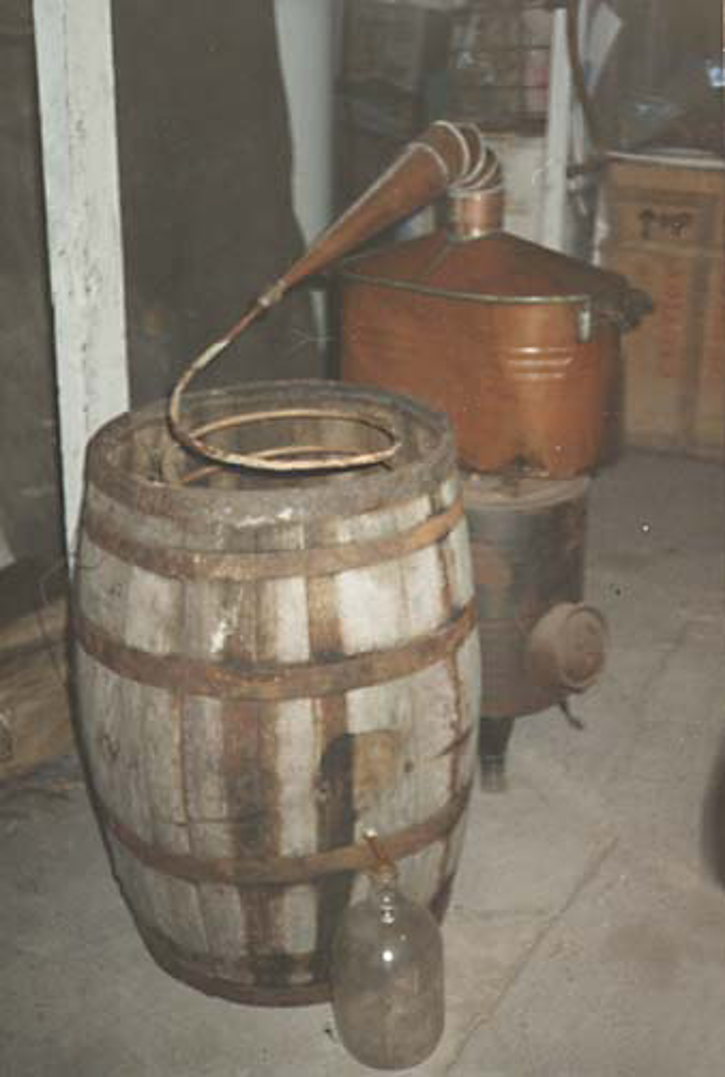Clay County Histories
Markus Krueger | Program Director HCSCC
I quote from The Alaskan Bootlegger’s Bible by Leon Kania: “Like Unicorns, Bathtub Gin appears to be mythological. There are no living witnesses, nor are there chronicles to support its existence, yet the legend persists that during prohibition a wicked, illicit form of gin was commonly made in bathtubs. There are wicked, illicit things you can do in a bathtub, but making gin is not one of them.”
People often mention “bathtub gin” when discussing the terrible booze of prohibition, but I doubt that anybody really made batches of disgusting and dangerous gin in their home bathtubs. You just don’t make gin with bathtubs.
Gin belongs to the snaps/schnapps family of alcoholic drinks, which are like herbal teas made with alcohol instead of water. Here’s a recipe: put juniper berries in a container of vodka. When you like how it tastes, take the juniper berries out, and you have gin. You can add different herbs and spices to the juniper berries if you like. Substitute dill or caraway seeds instead of juniper berries and you have Scandinavian akvavit. I don’t know how to employ a bathtub in this process.
I suppose, in theory, that you could fill your bathtub up with 60-or-so gallons of alcohol and juniper berries. But you wouldn’t, because that’s what wooden barrels are for. Georgetown farmer John Hoefling had the biggest prohibition-era moonshining operation that I’ve run across in the Red River Valley. When Hoefling was busted on March 23, 1932, he used six 50-gallon wooden barrels, not a series of bathtubs, to contain his whiskey mash. I’ve read about Minnesota moonshiners in Stearns County using 5-gallon metal milk containers to store their product. But the most common container for illegally made alcohol was rectangular gallon-sized tins, like the containers used for denatured alcohol at hardware stores today.
Bootleggers would buy the gallon tins around here for about $7 and divide the booze into 7-ounce glass flasks called mickeys, which they would sell for between $2-3.50 apiece. If Hollywood movies want to depict illegal moonshine, they always put it in a mason jar. I have never seen any mention in local newspaper accounts or arrest records of moonshine contained in either mason jars or bathtubs. Moonshine came in tins and mickeys.
So where did the idea of Bathtub Gin come from? My theory is people confused wash boilers for bathtubs. During prohibition, few rural homes had indoor plumbing, so people used wash boilers – big metal tubs that you put on your stovetop – to heat water for washing clothes and dishes and people. They came with lids to help the water heat faster. These were relatively easily – and often! – converted into moonshine stills by sealing the lid with flour paste and sticking a coiled metal tube out of the top.
John Hoeffling was busted with two 12-gallon wash boiler stills, and in August of 1928, deputy sheriffs found a wash boiler still hidden under the table at Elof Iverson’s house in Comstock. These boiler tubs were used not for turning unflavored alcohol into gin at the end of the process, but rather at the beginning of the process for distilling the fermented “mash” (like beer or wine) into concentrated alcohol (like vodka).
But don’t try this at home, folks! Not all prohibition alcohol laws got repealed in the 1930s. Distilling your own alcohol is still illegal.


